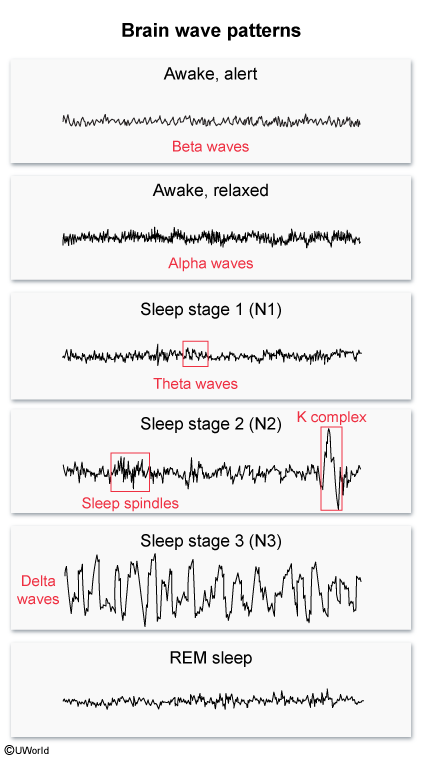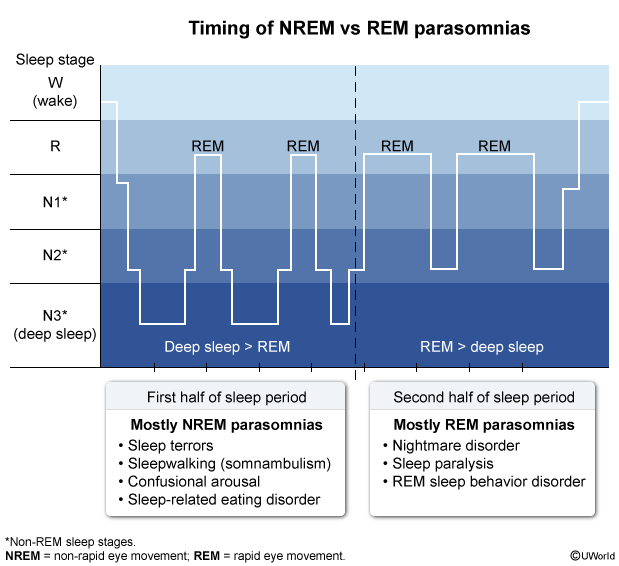Sleep Disorders
Article Sections
Introduction
Sleep-wake disorders encompass a wide range of conditions that affect sleep quality, timing, and duration, leading to impaired daytime functioning and overall health. This article discusses normal sleep physiology and the following sleep-wake disorders: insomnia disorder, sleep-related breathing disorders, central disorders of hypersomnolence, circadian rhythm sleep-wake disorders, parasomnias, and sleep-related movement disorders.
Normal sleep physiology
Sleep is characterized by distinct stages that repeat in cycles throughout the night and is divided into rapid eye movement (REM) and non-rapid eye movement (NREM) sleep (Table 1). NREM sleep is further divided into 3 substages (N1, N2, N3). Each stage and substage is characterized by a unique pattern of brain waves of different frequencies (Figure 1), which can be measured by polysomnography:
Continue Learning with UWorld
Get the full Sleep Disorders article plus rich visuals, real-world cases, and in-depth insights from medical experts, all available through the UWorld Medical Library.
Figures

